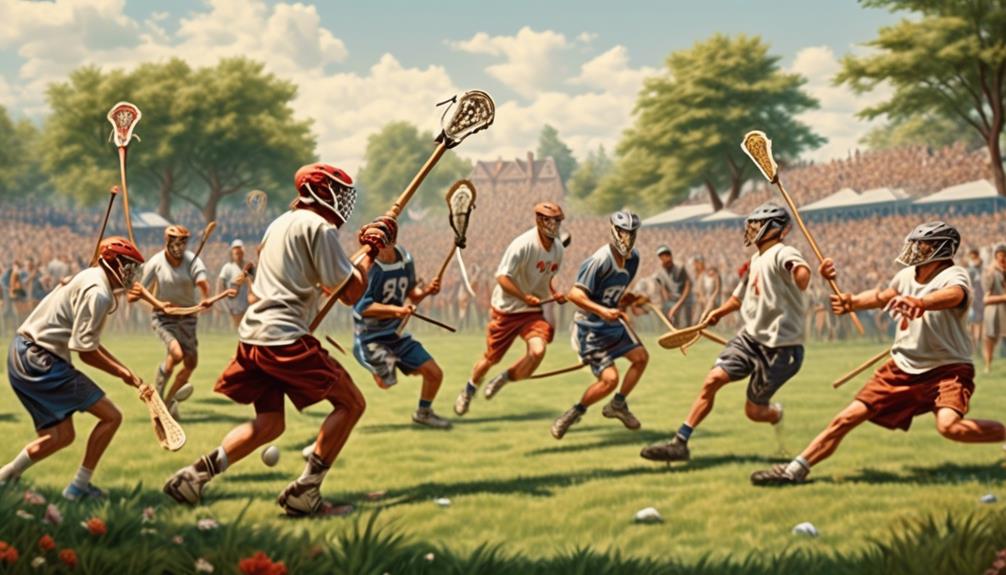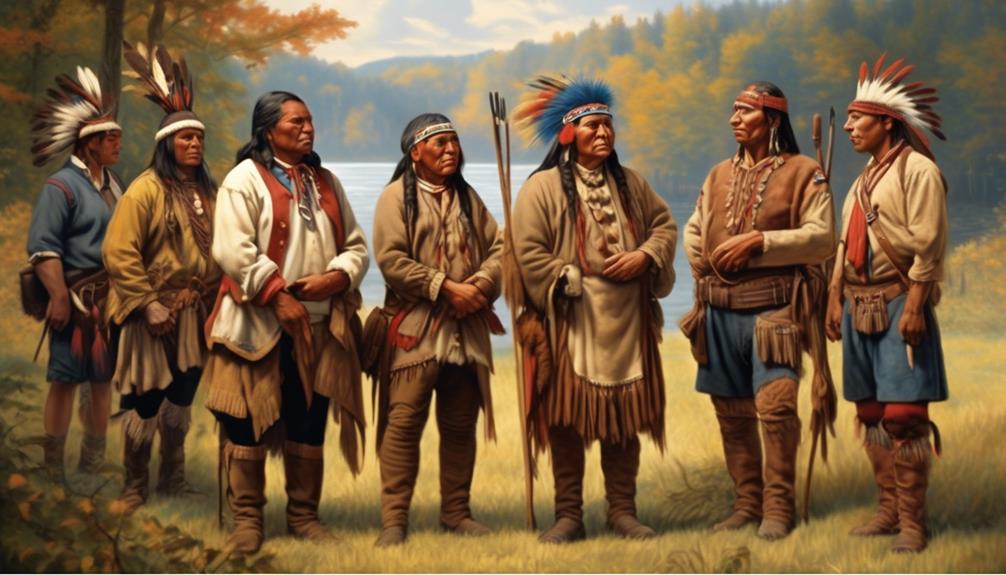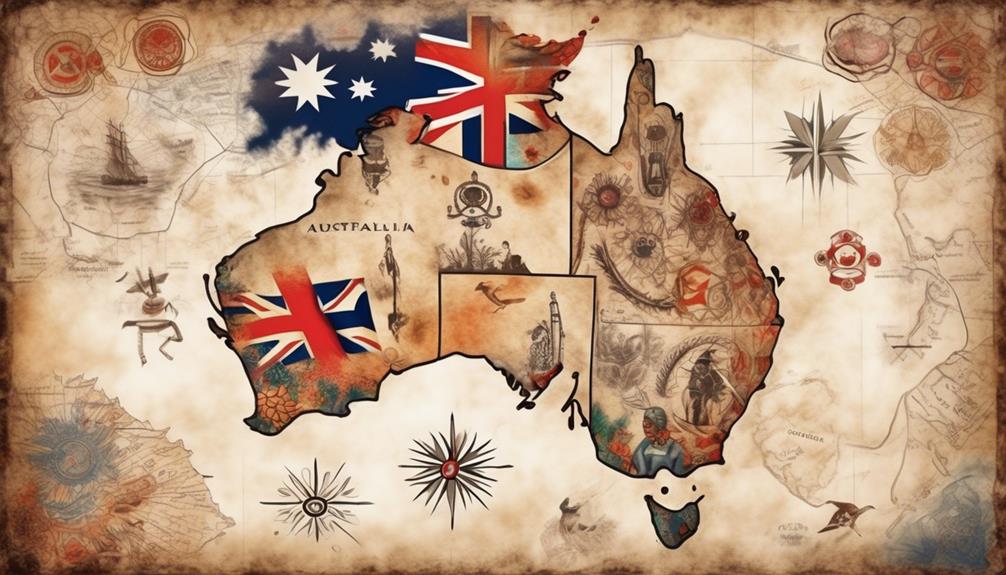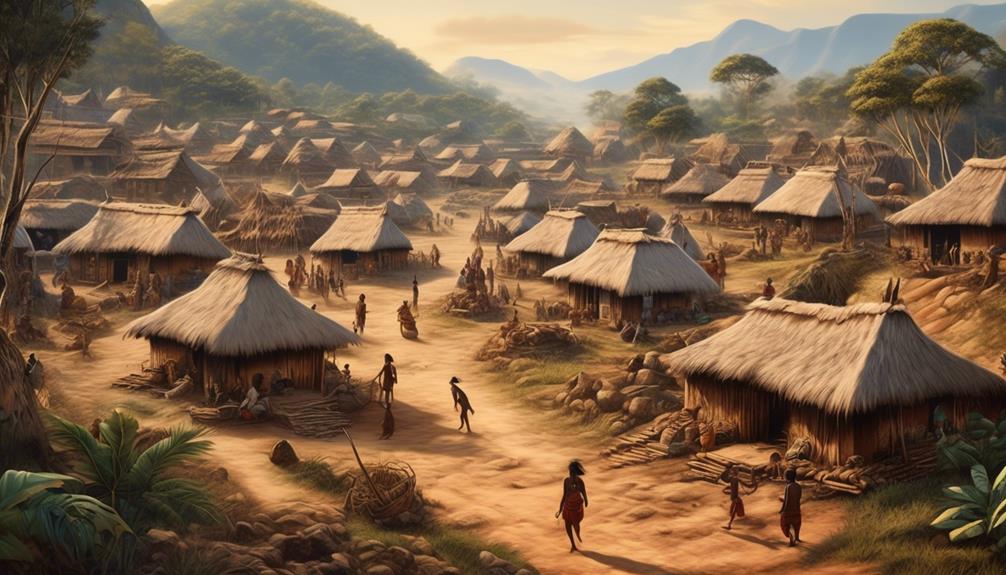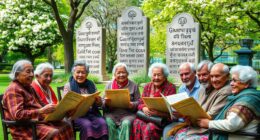The saying, “history tends to repeat itself,” holds particularly true when it comes to sports.
The indigenous game of baggataway, also known as the 'Creator's Game,' holds a significant place in the history of sports, particularly in North America.
But what sport derived from this traditional game? The answer might surprise you, as the evolution of baggataway into a modern sport has a fascinating and impactful story that has shaped the world of athletics.
Key Takeaways
- Baggataway, an Indigenous game, heavily influenced the design and evolution of modern lacrosse.
- Lacrosse has spread globally and has adapted to new environments and demographics, resulting in diverse regional variations and playing styles.
- Lacrosse holds significant cultural and historical importance for Indigenous communities, representing their values, traditions, and spirituality.
- Baggataway/Lacrosse has played a crucial role in passing down traditions and values to future generations, contributing to the preservation of Indigenous heritage.
Origins of Baggataway
The origins of Baggataway, also known as lacrosse, can be traced back to the Indigenous peoples of North America, specifically the Haudenosaunee (Iroquois) and other tribes, who've played the game for centuries as a means of recreation, spiritual expression, and for settling disputes.
This cultural heritage holds immense historical significance, as it offers a window into the traditions and values of these indigenous communities. The game of Baggataway was more than just a sport; it was a reflection of the tribal societies' spiritual beliefs, emphasizing teamwork, physical prowess, and the interconnectedness of the players with the natural world. It was often used to resolve conflicts, heal the sick, and give thanks for the land and its resources.
The game's historical significance lies in its role as a unifying force within Indigenous communities, promoting social cohesion and providing a way to pass down traditions and values from one generation to the next. Understanding the deep cultural roots and historical importance of Baggataway enriches our appreciation of the sport and its enduring legacy.
Traditional Gameplay and Rules

Although Baggataway has deep cultural roots and historical importance, the traditional gameplay and rules are essential to understanding the dynamics of the game. Baggataway, also known as lacrosse, is a fast-paced and physically demanding sport that originated as a traditional Indigenous game. The gameplay and rules of Baggataway reflect the historical significance and cultural practices of the Indigenous communities that played it. Understanding the traditional gameplay is crucial for appreciating the sport's evolution and its deep-rooted connection to Indigenous traditions.
Below is a table outlining the key elements of traditional Baggataway gameplay and rules:
| Traditional Gameplay and Rules | Description |
|---|---|
| Field Setup | The game is played on a field with goals at each end. Players use wooden sticks with a net to catch, carry, and pass the ball. |
| Object of the Game | The primary objective is to score goals by propelling the ball into the opposing team's goal using the lacrosse stick. |
| Cultural Significance | Baggataway was historically played for various reasons, including settling disputes, training warriors, and honoring spiritual beliefs. |
The traditional gameplay and rules of Baggataway are integral to its historical significance and cultural relevance, making it a unique and cherished sport with deep roots in Indigenous traditions.
Influence on Modern Lacrosse
Having evolved from a traditional Indigenous game, Baggataway, also known as lacrosse, has significantly shaped the development and dynamics of modern lacrosse. The influence of Baggataway on modern lacrosse can be seen in various aspects, particularly in the evolution of equipment and the overall gameplay experience.
- Influence on Equipment Evolution
- The traditional wooden sticks used in Baggataway heavily influenced the design of modern lacrosse sticks. The evolution from wooden sticks to today's composite materials has been a direct result of the need for increased durability and performance, while still paying homage to the traditional roots of the game.
- The introduction of protective gear, such as helmets, gloves, and pads, has been a significant influence from the traditional game. In Baggataway, players often wore minimal protective gear, but the physicality of the game necessitated the development of modern protective equipment to ensure player safety and enhance the overall experience.
These influences from the traditional Indigenous game of Baggataway haven't only shaped the equipment used in modern lacrosse but have also contributed to the evolution of the sport, ensuring its adaptability and relevance in contemporary times.
Spread and Evolution of the Sport
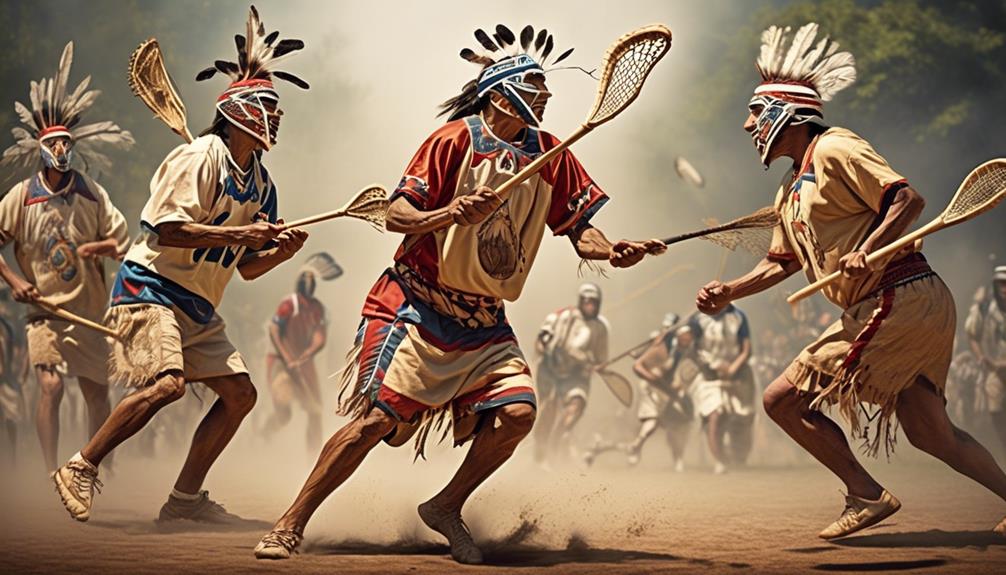
Since the early days, when indigenous communities originally played Baggataway, the sport has experienced a remarkable spread and evolution, adapting to new environments and demographics. The evolution of Baggataway into modern lacrosse has been marked by significant changes in playing techniques and equipment. The sport's global popularity has played a pivotal role in its evolution, leading to diverse regional variations and playing styles.
Modern techniques in lacrosse have evolved to include advanced offensive and defensive strategies, making the game more dynamic and tactical. Moreover, equipment advancements such as the development of lightweight, durable sticks and protective gear have enhanced player performance and safety, contributing to the sport's evolution.
The spread of lacrosse to different parts of the world has further influenced its evolution. As the sport gained popularity in various countries, it incorporated elements from different cultures, leading to a more diverse and inclusive game. Additionally, lacrosse's expansion to new regions has fostered the development of new talent and innovative playing styles, enriching the sport's global landscape.
Cultural Significance and Relevance
The cultural significance and relevance of Baggataway, known today as lacrosse, is deeply rooted in the traditions and heritage of Indigenous communities, playing a pivotal role in shaping their social and ceremonial practices.
- Cultural Impact
Lacrosse is more than just a game; it's a cultural touchstone for many Indigenous communities, representing their values, traditions, and spirituality. The sport is often intertwined with tribal customs, serving as a means to honor ancestors and connect with the natural world.
- Historical Significance
The historical significance of lacrosse can't be overstated. It has been played for centuries and holds a revered place in Indigenous history. The game has served as a way to resolve conflicts, build alliances, and maintain physical and mental readiness. Its enduring presence reflects the resilience and strength of Indigenous cultures.
Lacrosse continues to be a source of pride and unity for Indigenous peoples, carrying forward their rich legacy. Its cultural impact and historical significance make it a cherished and essential part of Indigenous identity and community cohesion.
Frequently Asked Questions
What Are the Specific Health Benefits of Playing Lacrosse Compared to Other Sports?
Specific health benefits of playing lacrosse compared to other sports include:
- Injury prevention due to the full-body padding
- Physical conditioning from the non-stop action on the field
It's a dynamic sport that enhances:
- Cardiovascular endurance
- Strength
- Agility
This promotes overall fitness. The combination of sprinting, dodging, and stick work offers a unique blend of physical demands, making it an excellent choice for those seeking a comprehensive workout.
Are There Any Famous Professional Athletes Who Credit the Sport of Lacrosse With Helping Them Succeed in Their Careers?
Famous athletes from various sports, such as Jim Brown and Chris Hogan, credit lacrosse for their professional success.
Lacrosse's unique combination of speed, agility, and hand-eye coordination has served as athletic inspiration for many.
The skills honed on the lacrosse field have translated into successful careers in football, providing a competitive edge.
This illustrates the powerful impact of lacrosse in shaping the careers of renowned professional athletes.
How Has the Equipment Used in Modern Lacrosse Evolved From the Traditional Gear Used in Baggataway?
The equipment used in modern lacrosse has evolved significantly from the traditional gear used in baggataway. The evolution of lacrosse equipment has been driven by a focus on player safety and performance.
Traditional gear was rudimentary compared to the modern gear in lacrosse, which provides better protection and enhances player performance.
This evolution reflects the sport's growth and the increasing emphasis on safety and performance in modern gear.
What Role Do Women Play in the History and Modern Practice of Lacrosse?
In the history and modern practice of lacrosse, women play a significant role. Their involvement has evolved from traditional roles to active participation in the sport.
Women have contributed to the growth and diversification of lacrosse, impacting its modern practice. Their roles have expanded to encompass players, coaches, officials, and leaders, shaping the sport's development.
This integration has enriched the game, promoting inclusivity and propelling lacrosse to new heights.
Are There Any Superstitions or Rituals Associated With Playing Lacrosse, Either Historically or in the Present Day?
Superstitions and rituals have always been part of lacrosse, from historical practices to present-day traditions.
Players often have pre-game routines, such as wearing certain items or carrying out specific rituals for good luck.
In the past, some Indigenous teams would perform ceremonial dances before matches. These traditions continue today, highlighting the deep cultural significance of lacrosse.
Understanding the historical and modern role of superstitions and rituals in the sport adds depth to our appreciation of its heritage.
Conclusion
In conclusion, the sport of lacrosse, derived from the indigenous game of baggataway, holds deep cultural significance and has evolved into a widely popular sport today.
Just like the traditional game required teamwork, skill, and strategy, modern lacrosse continues to bring people together and showcase the rich heritage of indigenous communities.
The growth of lacrosse among diverse populations reflects its ability to unite people from different backgrounds, much like the way players come together on the field.
Mary is a passionate writer who brings creativity and a fresh perspective to our team. Her words have the power to captivate and inspire, making her an essential contributor to our content. Mary’s commitment to storytelling and dedication to promoting Indigenous culture ensures that her work touches the hearts of our readers. We’re fortunate to have her as part of our team.
